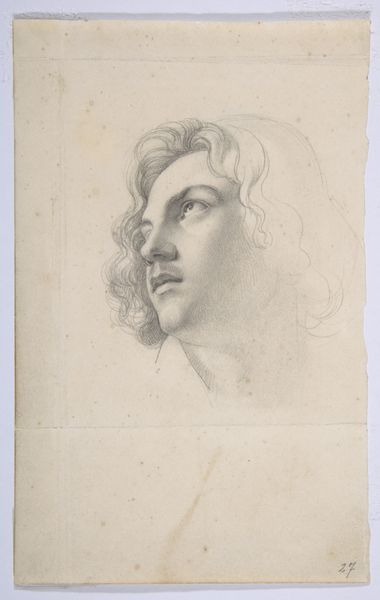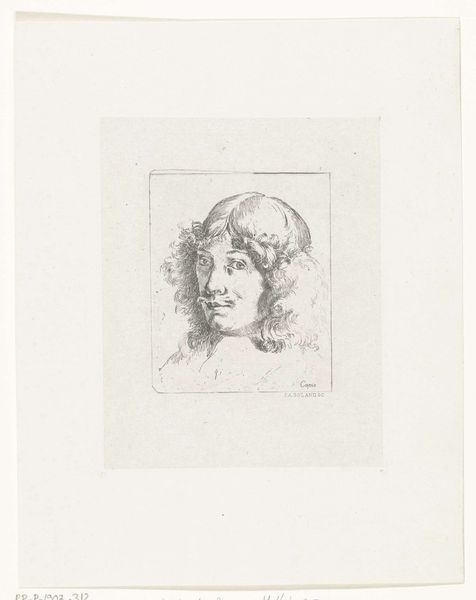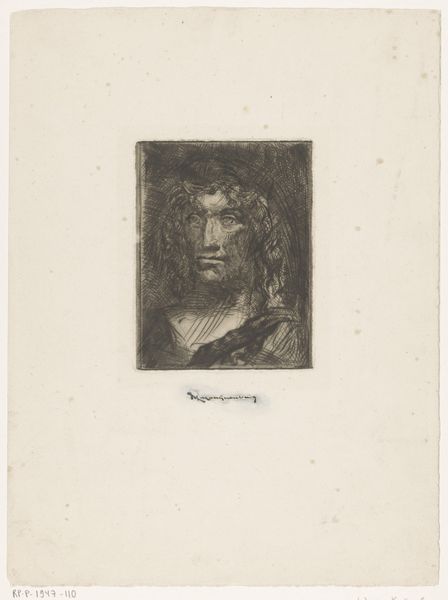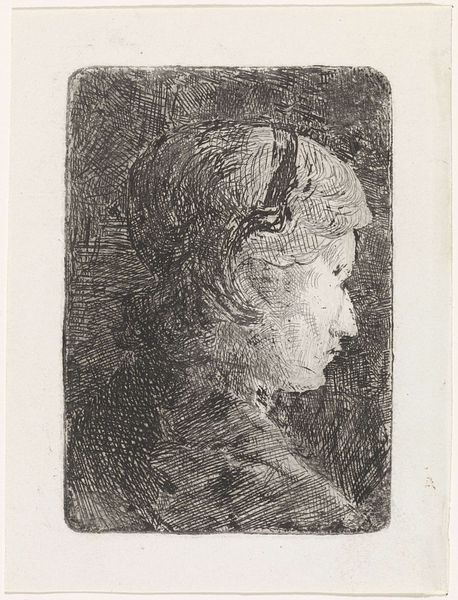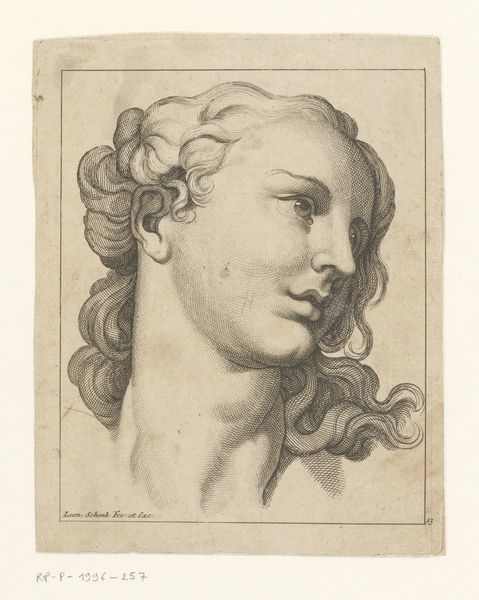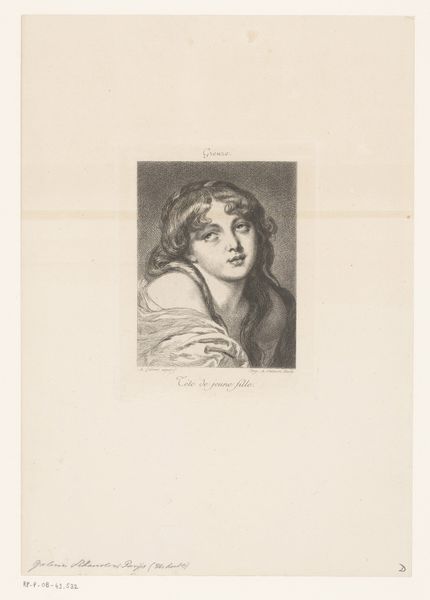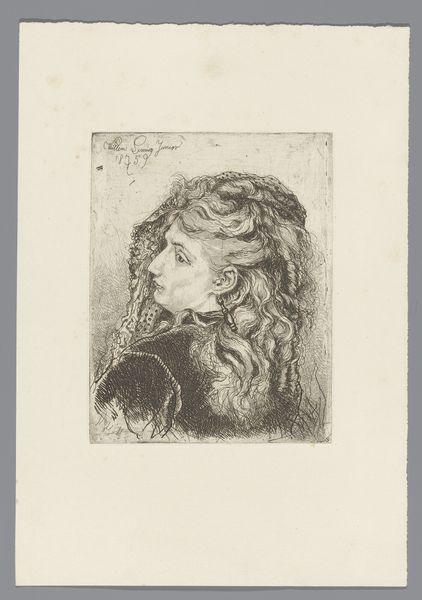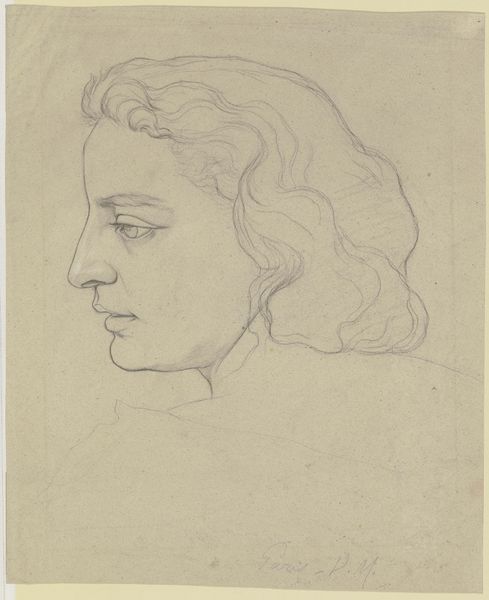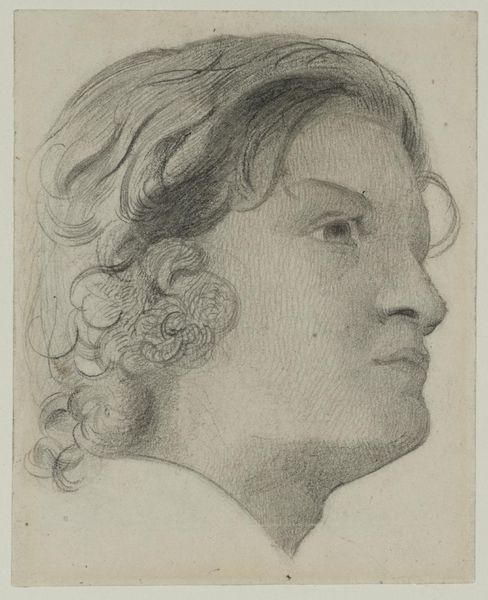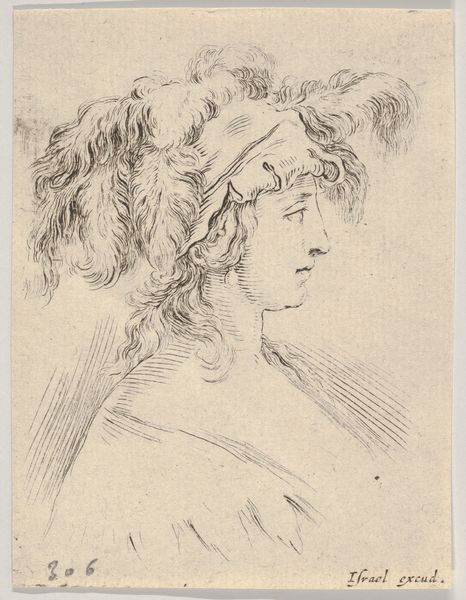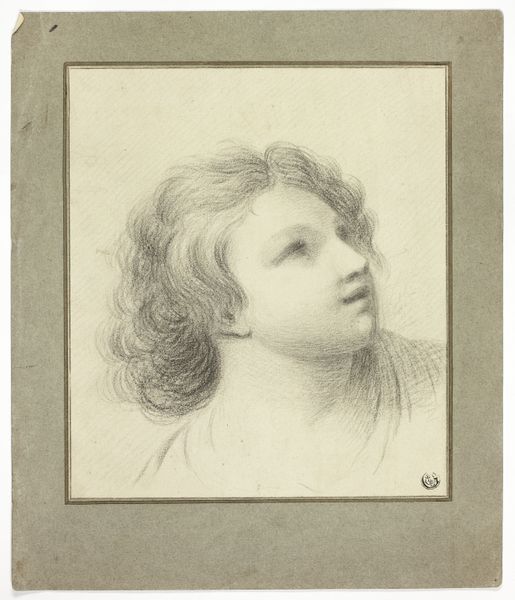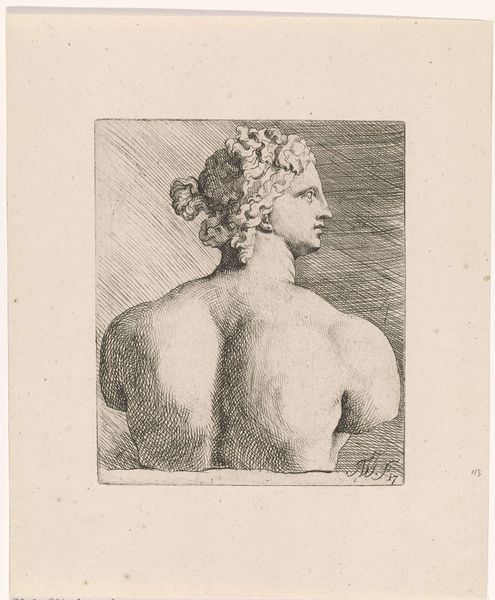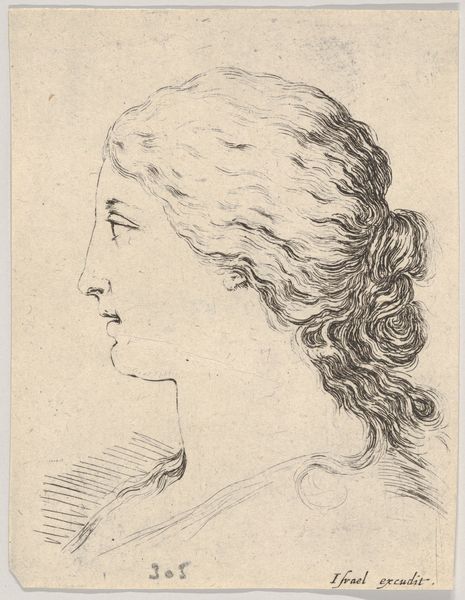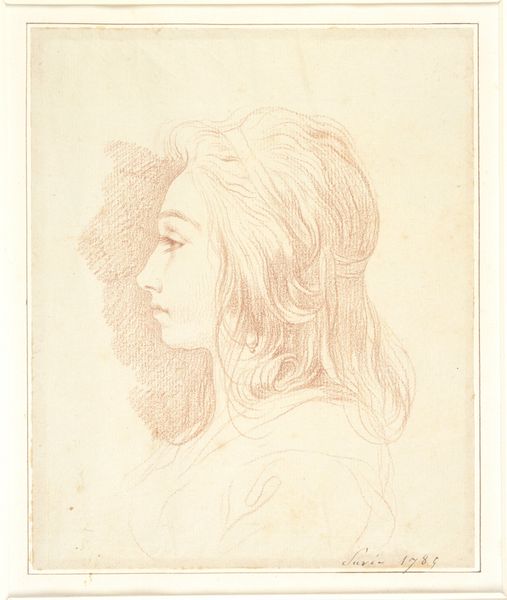
print, etching
#
portrait
# print
#
etching
#
old engraving style
#
german-expressionism
Dimensions: height 263 mm, width 211 mm
Copyright: Rijks Museum: Open Domain
Editor: This is Hans Thoma’s "Head of a Girl," created in 1911 using the etching technique. The expression is captivating; the sitter appears both melancholic and determined. What sociopolitical currents may have impacted Thoma when creating this piece? Curator: That's an astute observation. It’s crucial to place this image within the burgeoning German Expressionist movement. Artists were grappling with rapid industrialization, anxieties about modernity, and a deep sense of alienation. Considering that 1911 was just before World War I, what anxieties and gender stereotypes were already pervasive, especially given that it depicts a female subject? Editor: That's an interesting perspective! Do you mean how she's portrayed in the etching? Curator: Exactly. This etching reflects the limited roles and stereotypes assigned to women at the time. Although it seems to depict individuality, note the passivity in her gaze, maybe reflecting a societal constraint or imposed silence. German Expressionism reflected intense interiority, but it could also reinforce certain stereotypes that constrained individual women's emancipation in this era. The question is, does Thoma simply mirror existing social structures or offer a nuanced critique of them? Editor: So you’re suggesting we look at how the artist both reflected and perhaps challenged prevailing attitudes through visual language? Curator: Precisely! Think about who the intended audience for this print may have been and what their expectations would be regarding gender representation. The etching becomes a site where cultural anxieties are both visualized and potentially questioned. Considering the broader historical context can help unpack the image. Editor: I'm understanding that considering history helps in noticing things like an intended message, societal values, and expectations present in this art. Curator: Precisely, it also gives voice to the silenced histories embedded in seemingly simple artworks. It's essential to understand art as cultural document.
Comments
No comments
Be the first to comment and join the conversation on the ultimate creative platform.
